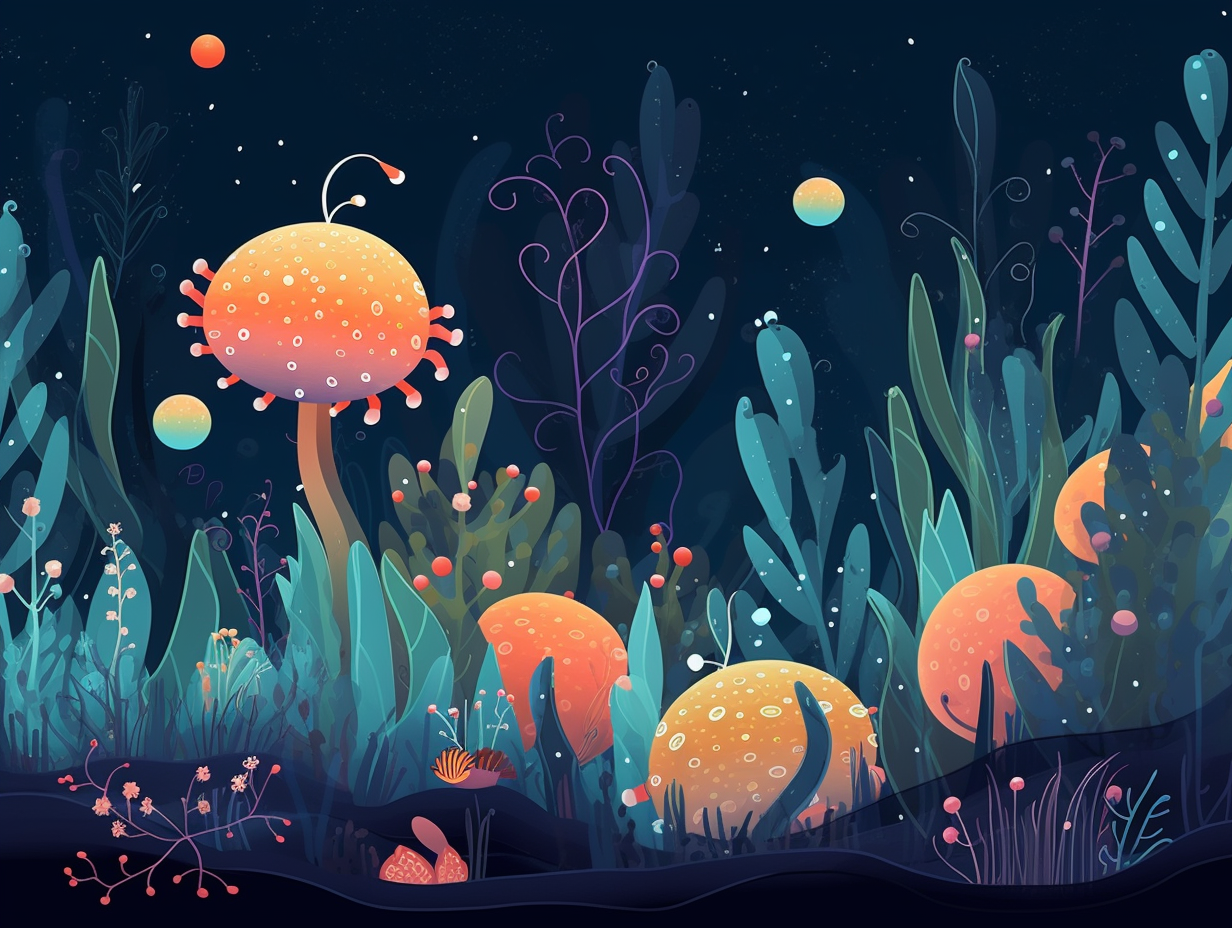Discover the Unseen World: Top 8 Amazing Fun Facts About Amoebas!

1. Master-shapeshifter
Ever tried fitting into jeans from your high school days when you were just a slim-waisted teenager? Fear not, as nature's own "master-shapeshifter" amoeba shows the way, squeezing through gaps and thriving as the blob-tastic adventurer it is: Thanks to cytoplasmic streaming, amoebas can change their shape and size, extending their pseudopods like tiny arms to move and feed - now that's what you call survival skills!
Source => byjus.com
2. The Invisibility Cloak Trick
Amoebas have attended Slytherin school of stealth, mastering their very own invisibility cloak trick: they can alter their cell membrane's surface molecules to evade detection by their host's immune system when they turn parasitic.
Source => thoughtco.com

Did you know that Paramecium has 4,000 perfectly synchronized dancing cilia controlled by bioelectric signals? Discover more about this microscopic groove master and its potential contribution to scientific research! 🕺🔬
=> Fun Facts about Paramecium
3. Smart Slime Navigation
Who needs a brain when you've got slime? Amoebas are giving new meaning to the term "smart slime": According to researchers from Hokkaido University in Japan and the University of Sydney, these seemingly simple organisms use a rudimentary internal clock and a trail of slime in order to navigate their environment, anticipate changes, and avoid areas they've already explored – all without the aid of a brain or nervous system.
Source => nature.com
4. Pseudopodia Party
In an amoeba's world, morphing one's body shape isn't just a party trick, it's a daily necessity – meet the true (very tiny) shapeshifters of the biological kingdom! These versatile critters might not impersonate celebrities, but: they use pseudopodia, temporary projections filled with cytoplasm, to move around and capture food, with five different forms to choose from: lobopodia, filopodia, reticulopodia, axopodia, and lamellipodia. Their diverse pseudopodia make amoebas highly adaptable, efficient foragers, and masters of locomotion.
Source => biologyonline.com

5. Slugfest Teamwork
When amoebas throw a 'slugfest', it's not a slimy boxing match, but a microscopic fiesta of teamwork: These tiny single-celled organisms can join forces to form a "slug", mimicking the behavior of ancient amoeba-like creatures that existed over 2.1 billion years ago and pioneered mobile life on Earth – only to disband when oxygen levels dipped for a billion years.
Source => blogs.scientificamerican.com
6. Groovy Dance Moves
If amoebas attended a shapeshifter's ball, they'd surely steal the limelight with their groovy dance moves: Amoebas constantly change their shape in a unique way called amoeboid movement, allowing them to crawl and wiggle, which is so fascinating that it's used in medical research to understand cell movement.
Source => thoughtco.com
7. The Zombie Amoeba
If amoebas attended zombie parties, Naegleria fowleri would certainly be the life – or rather, death – of the gathering: This tiny organism, found in warm fresh water and soil, has a knack for causing a rare and lethal brain infection called primary amebic meningoencephalitis, while also moonlighting as a snack-provider for small bacteria dwelling in lake and river sediments.
Source => cdc.gov
8. Tiniest Circus Master
Hear ye, hear ye! Step right up and witness the great Acanthamoeba castellanii – the world's tiniest circus master, host to an incredible troupe of uninvited bacterial performers: Seriously, folks: amoebas can shelter and transport foodborne pathogens like Salmonella, E. coli, and others, which survive inside their cysts even under acidic conditions and antibiotic treatments, remaining viable for up to 3 weeks. These tiny ringleaders might be playing a bigger part in the spread of foodborne illnesses than we've ever imagined!
Source => ncbi.nlm.nih.gov
Related Fun Facts




















